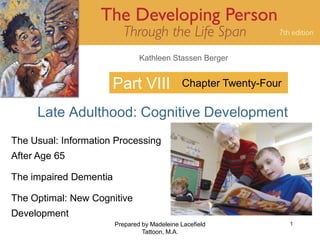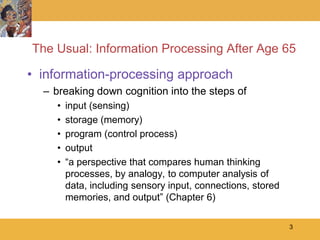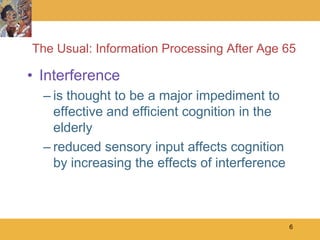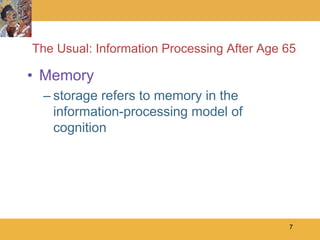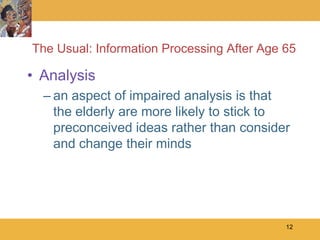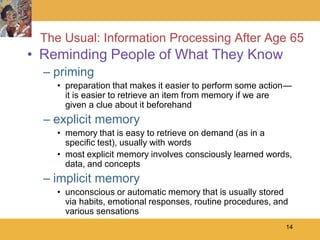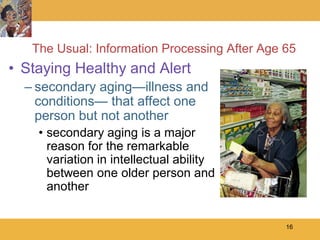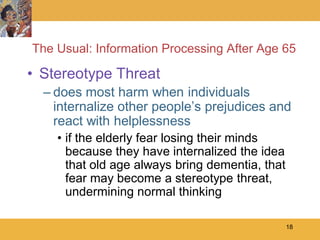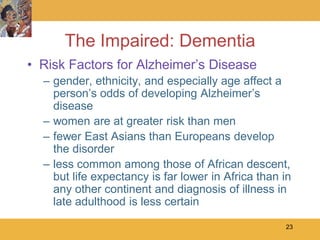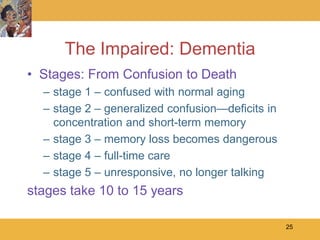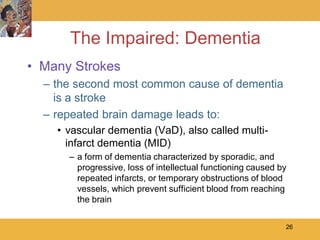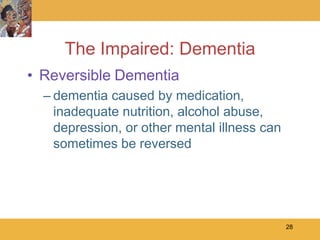The document discusses cognitive development in late adulthood, including both typical cognitive declines and optimal development. Typically, cognition declines as sensing, attention, memory, processing speed, and retrieval worsen after age 65 due to biological changes. However, dementia is abnormal and its causes include Alzheimer's, strokes, Parkinson's, and some reversible forms. Optimally, late adulthood brings gains like greater appreciation of aesthetics and life review, and the development of wisdom.
